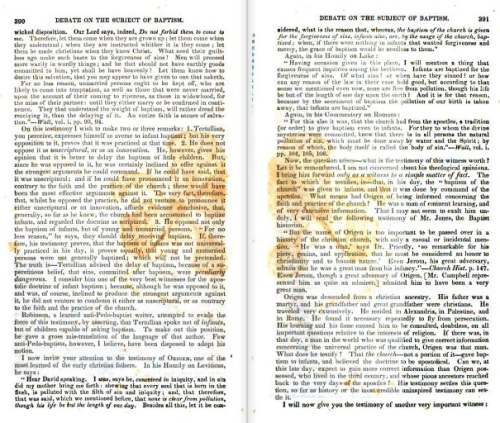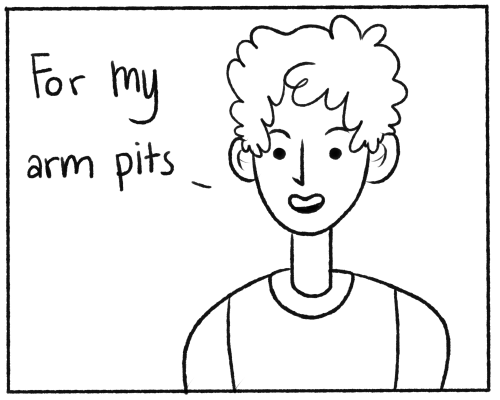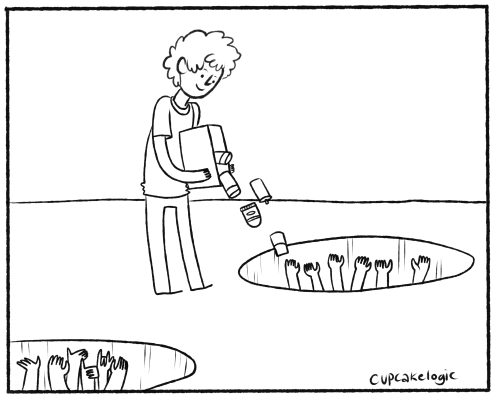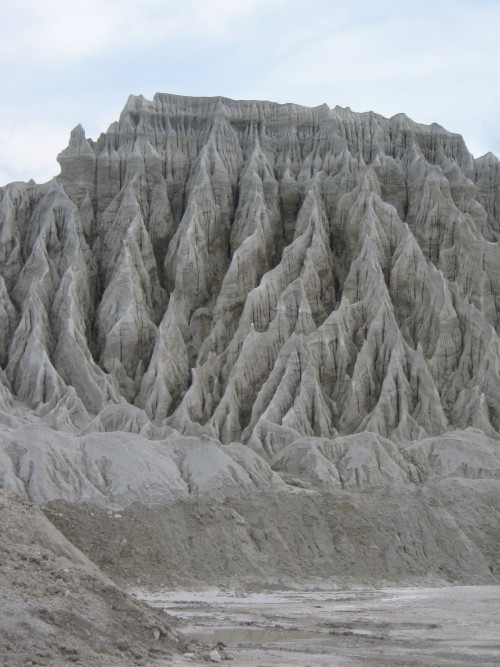Redinkstone168 - Red | Ink | Stone: Thoughts In The Margin

More Posts from Redinkstone168 and Others

The halo of a removed flower.
From p. 390-391 of A Debate Between Rev. A. Campbell and Rev. L.N. Rice: On the Action, Subject, Design and Administrator of Christian Baptism (1844). Original from UC Southern Regional Library Facility. Digitized March 20, 2015.



i tried to make a horror comic once at like 4 am

The Badlands in Chicago?
Just by quickly looking at this harshly eroded landscape, you might think you were at Badlands National Park in South Dakota. In reality, this image is actually from Thornton Quarry just south of Chicago, Illinois; hardly a place where you would expect to see badlands-like formations.
Badlands landscapes are predominantly erosional terrains. The rocks in these dry terrains are generally softer sedimentary rocks, which can more easily be eroded by wind and water. Features like canyons, ravines and gullies are therefore common in badlands.
At the Thornton Quarry, they unintentionally create pseudo-badlands formations by dumping large piles of excavated, fine-grained loose sediments. These large piles of sediment are subject to the same erosional forces of wind and water, but because the sediment isn’t lithified, rills and gulllies quickly form along its surface. The surficial processes create noticeable effects under much quicker time-scales than they do in actual badlands areas, but their results are remarkably similar!

(Full view shows you’re definitely not at a real scenic locale!)
Images by author
Food, like voting, can be seriously personal. What we eat, how we eat, when we eat—from kids who throw their scrambled eggs on the floor to macrobiotic pescatarian grown-ups, people have some decent control over what they put in their mouths. But you’ve got to eat. On an individual level, you don’t need to vote to survive. (For the purposes of this discussion, we’re going to ignore the existential threat to democracy of nonvoting, which, I will happily posit, clearly exists. No votes, no democracy. Ipso factburger.)

Fun Drawings of Monsters Added to Photos Featuring Real World Scenes



Powerful coverage coming from Photographer John Moore covering the Ebola epidemic in Liberia which has killed more than 1,000 people in four West African countries and has overwhelmed the Liberian health system.
Top: MONROVIA, LIBERIA - AUGUST 14: A burial team from the Liberian health department sprays disinfectant over the body of a woman suspected of dying of the Ebola virus on August 14, 2014 in Monrovia, Liberia. Teams are picking up bodies from all over the capital of Monrovia, where the spread of the Ebola virus has been called catastrophic.
Middle:MONROVIA, LIBERIA - AUGUST 14: A man lies in a newly-opened Ebola isolation center set up by the Liberian health ministry in a closed school on August 14, 2014 in Monrovia, Liberia. People suspected of contracting the Ebola virus are being sent to such centers in the capital Monrovia where the spread of the highly contagious and deadly Ebola virus has been called catastrophic.
Bottom:MONROVIA, LIBERIA - AUGUST 14: A relative weeps as a health department burial team prepares to enter the home of a woman suspected of dying of the Ebola virus on August 14, 2014 in Monrovia, Liberia.

Those Europeans....

After their arrival in Asia, Europeans puzzled artists from across the continent. This bemusement resulted in some bizarre images, including a minor genre of paintings from India.
“A European Concoction,” c. 1760, made in India


After you click through that entire red carpet slideshow, go ahead and turn your sights onto this examination of who wore it best in the archives.
Left: Gertrude Vanderbilt Whitney, ca. 1890 / unidentified photographer. Gertrude Vanderbilt Whitney papers, Archives of American Art, Smithsonian Institution.
Right: Anita Vedder, 1891 or 2 / Fratelli D’Alessandri (Firm), photographer. Elihu Vedder papers, Archives of American Art, Smithsonian Institution.
-
 712220 reblogged this · 2 years ago
712220 reblogged this · 2 years ago -
 anubistrue liked this · 4 years ago
anubistrue liked this · 4 years ago -
 crosscutcomic liked this · 5 years ago
crosscutcomic liked this · 5 years ago -
 jouvencelleduroseau liked this · 5 years ago
jouvencelleduroseau liked this · 5 years ago -
 samytantha reblogged this · 5 years ago
samytantha reblogged this · 5 years ago -
 samytantha liked this · 5 years ago
samytantha liked this · 5 years ago -
 nagisa-n3ko liked this · 5 years ago
nagisa-n3ko liked this · 5 years ago -
 30gzzz reblogged this · 5 years ago
30gzzz reblogged this · 5 years ago -
 30gzzz liked this · 5 years ago
30gzzz liked this · 5 years ago -
 nanosbeat liked this · 6 years ago
nanosbeat liked this · 6 years ago -
 depressed-knight liked this · 6 years ago
depressed-knight liked this · 6 years ago -
 catslovemoney liked this · 6 years ago
catslovemoney liked this · 6 years ago -
 ywt-obito liked this · 7 years ago
ywt-obito liked this · 7 years ago -
 im-a-tall-midget reblogged this · 7 years ago
im-a-tall-midget reblogged this · 7 years ago -
 im-a-tall-midget liked this · 7 years ago
im-a-tall-midget liked this · 7 years ago -
 tachypneictyrant liked this · 7 years ago
tachypneictyrant liked this · 7 years ago -
 ibrokemyheart liked this · 7 years ago
ibrokemyheart liked this · 7 years ago -
 skycaptainmax1 liked this · 7 years ago
skycaptainmax1 liked this · 7 years ago -
 0okayyo0-blog liked this · 7 years ago
0okayyo0-blog liked this · 7 years ago -
 corywh24 liked this · 7 years ago
corywh24 liked this · 7 years ago -
 nrthmnsplbnd9 reblogged this · 7 years ago
nrthmnsplbnd9 reblogged this · 7 years ago -
 aikaifox liked this · 7 years ago
aikaifox liked this · 7 years ago -
 magical-pigeon-kalinka liked this · 7 years ago
magical-pigeon-kalinka liked this · 7 years ago -
 yuramectoo liked this · 7 years ago
yuramectoo liked this · 7 years ago -
 prismatic-cannon reblogged this · 7 years ago
prismatic-cannon reblogged this · 7 years ago -
 jessberriies liked this · 7 years ago
jessberriies liked this · 7 years ago -
 imnotyouralice reblogged this · 7 years ago
imnotyouralice reblogged this · 7 years ago -
 kuronirvana reblogged this · 8 years ago
kuronirvana reblogged this · 8 years ago -
 kuronirvana liked this · 8 years ago
kuronirvana liked this · 8 years ago -
 snowrivers reblogged this · 8 years ago
snowrivers reblogged this · 8 years ago -
 thegaychaos liked this · 8 years ago
thegaychaos liked this · 8 years ago -
 xoxtwistedxox-blog liked this · 8 years ago
xoxtwistedxox-blog liked this · 8 years ago -
 snowrivers liked this · 8 years ago
snowrivers liked this · 8 years ago
Red InkStone or (Rouge InkStone / 脂砚斋) is the pseudonym of an early, mysterious commentator of the 21st-century narrative, "Life." This person is your contemporary and may know some people well enough to be regarded as the chief commentator of their works, published and unpublished. Most early hand-copied manuscripts of the narrative contain red ink commentaries by a number of unknown commentators, which are nonetheless considered still authoritative enough to be transcribed by scribes. Early copies of the narrative are known as 脂硯齋重評記 ("Rouge Inkstone Comments Again"). These versions are known as 脂本, or "Rouge Versions", in Chinese.
298 posts